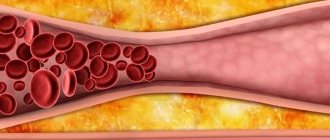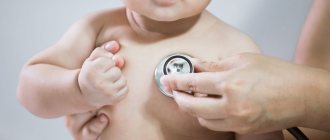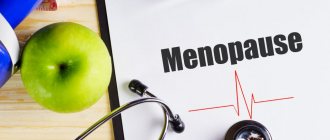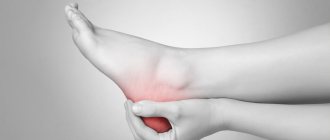Before moving on to analyzing the basic principles of this weight loss technique, let’s delve into history. The creator of the diet is Robert Atkins, a cardiologist from the USA. Since the mid-20th century, he has been developing his own nutritional system that would help his patients fight cardiovascular diseases.
His research became known after the publication of the book “Dr. Atkins’ Diet Revolution” in 1972. There the doctor explained in detail the basic concepts and principles of the technique. After 20 years, he published another book, “Dr. Atkins’s New Revolutionary Diet,” in which he expanded the previously published edition and introduced additional points and clarifications.
Such a food system could not but interest scientists. First of all, they checked its effectiveness and safety for the body. It has been shown to actually promote weight loss. But staying on a protein diet for a long time has a negative effect on the body.
All information presented in the article is of an educational nature and is not a guide to action. To bring your body to a normal weight and not harm your health, you should contact a specialist. The Doctor Bormenthal clinic has its own patented method of losing weight and maintaining results, with the help of which more than half a million people have already lost weight. Read more about her here -.
General rules
The diet of cardiologist Robert Atkins is also known as the Hollywood nutrition system.
This is a low-carb technique that appeared in the twentieth century. The essence of the diet is to limit carbohydrates and provide the body with energy from stored fats, not glucose. Nutritionist Robert Atkins put together a four-phase method:
- the first phase is induction;
- second phase – weight loss;
- the third phase is preparation for maintaining a constant weight;
- the fourth phase is weight maintenance.
Phase I
The first phase is called induction and is the adjustment of the desired metabolism. This phase starts the process of ketosis - the fat burning process.
According to this most strict phase, which can last from 2 weeks, you need to consume no more than 20 g of carbohydrates per day. This rule should not be violated under any circumstances during this period, otherwise efforts will be in vain.
How does the first phase work? glycogen reserves , which are stored in muscle tissue, and the release of insulin into the blood stops due to a decrease in glucose levels. On days 3-4, the body switches from burning carbohydrates to burning fats: it needs to get energy from somewhere, right? This is how ketosis .
During the first phase, a week later, you can already notice some weight loss: the body has gotten rid of excess fluid, swelling has disappeared. Don't worry about this being the end result. Further, the fat burning process will occur even more intensely.
In general, the duration of induction directly depends on your well-being, endurance and results achieved over these 2 weeks. Remember that during the entire period of the first phase you must lose at least 1 kg of weight, and the results must be tangible and visible. If the results do not suit you, but patience allows, then “Induction” can be extended to 4-6 weeks.
Most often, the induction menu quickly becomes boring, and those losing weight switch to phase II.
Phase II
While in the second phase, your body continues to reduce weight and volume due to the same burning of the fat layer from which energy is extracted.
This is the main phase, which can last from 3-5 weeks to several years. And this is where you need to very carefully monitor your personal carbohydrate intake per day, at which you will still lose weight. Remember that the carbohydrate intake is individual for each person, and the optimal amount can only be found through experimentation.
Start your search for carbohydrate norms with the induction minimum, which is 20 g per day. Next, very gradually, 3-5 g at a time, increase the amount of carbohydrate-containing foods, observing your body and weight loss. Slowing down your weight loss rate indicates that you are near the best amount of carbohydrates allowed. Thus, by maintaining the found amount of carbohydrates per day, you will be able to lose weight in a comfortable manner and with a varied menu for a very long time.
During all phases, it is very important not to forget about one of the most powerful ways to increase the speed of the metabolic process - physical activity. Moreover, with a low-carb diet, they are the same basic component as counting and limiting carbohydrates in the diet.
The second phase can continue until you have 3-6 kg left to lose to your acceptable or ideal weight.
When this milestone is reached, you should move on to the third phase of the Atkins diet.
Phase III
The third phase is the transition from active weight loss to weight maintenance. Here you have already dealt, and very successfully, with a large amount of excess fat and are closer to your ideal weight. Now you are actively involved in sports, eat proper and healthy food, and your figure is a source of pride.
The entire third phase is aimed at choosing for yourself such a nutritional system, the amount of carbohydrates and physical activity that will be required to maintain the achieved results for the rest of your life. And here it is important to remember that if you return to a normal diet full of large amounts of carbohydrates, the weight will quickly return, possibly even in an increased amount. This is why the third phase is important: you need to decide how and what you will eat in order to enjoy life and your body.
Most often, this stage lasts from 1 to 3 months. Here you increase the amount of carbohydrate intake gradually, by 5-7 g per week, while strictly monitoring your body condition and the numbers on the scales. In addition, you can include in the menu every week some new product that you did not allow yourself before. It is during this period that experiments with sugar, sweets, and other favorite harmful foods occur. That is, if when you eat 30 g of chocolate once a week, your weight does not change or fluctuate, then you can fit this indulgence into your diet. Of course, you shouldn’t overdo it.
Phase IV
When you reach the fourth phase of the Robert Atkins diet, such eating will no longer be difficult for you, but only pleasure. Here you can already confidently note that you have reached your own ideal weight, and the low-carb menu has long become a habit. But you shouldn’t relax here either! It is necessary to constantly and very closely monitor your weight and the amount of carbohydrate-containing food. This phase is constant, one might say, for life, in order to avoid gaining weight again. Here you eat based on the amount of carbohydrates per day that was determined during the third phase of the diet.
Dr. Atkins' revolutionary new diet
The book that laid the foundation for this technique and with the help of which the diet became known throughout the world. In it, the doctor collected the results of his many years of experience and work on obesity . We recommend reading this book while on a diet, since it describes in more detail all the advantages and benefits of the diet, and explains the biochemical processes that occur in the human body when changing diet. Also, the work contains many delicious low-carb recipes.
Book "Dr. Atkins' New Revolutionary Diet"
Thus, the Robert Atkins method is a carefully thought-out and popular way to lose weight, perfect for adults suffering from excess weight problems. In addition, studies have proven that a low-carbohydrate diet is mandatory for epilepsy . This method of nutrition significantly reduces the number and severity of epileptic seizures.
In addition, it is also suitable for the treatment of childhood obesity. The method of using a low-carbohydrate diet for children is as follows: you need to gradually reduce the amount of carbohydrates in the child’s menu to an acceptable amount at which he will lose weight, avoiding the first phase of induction.
Basic rule: eat right and lose weight
The basic rule of this weight loss diet can be formulated as follows: “fat is better than carbohydrates.” Of course, this does not mean that you can eat to your heart’s content. Here, as in any other diet, there are rules:
- It is necessary to eliminate or minimize the consumption of carbohydrates. Even a slight excess of the limit can spoil the expected result; for this it is better to create a menu for every day or you can use the Atkins diet menu presented below.
- You can eat high-calorie foods, but overeating is strictly not recommended.
- Products with any sugar and starch content (that is, sweets, flour, potatoes) are prohibited.
- Drink 1-1.5 still water, you can drink green tea without sugar.
- Since the diet does not impose restrictions on the amount of food, an important rule is NOT to overeat. It is better to leave the table feeling slightly hungry.
- Moderate physical activity is encouraged - yoga, Pilates, exercises.
- Be sure to follow the phases!
To get maximum results, the Atkins Diet requires you to go through four phases (some interpretations have just two).
Atkins diet, allowed foods
Phase I
- any fish (white, red, river, sea);
- any poultry (turkey, goose, duck, chicken, chicken meat);
- any seafood (shrimp, sea cocktail, mussels, oysters, crabs);
- any meat (lamb, pork, veal, beef);
- chicken, ostrich, quail eggs in any form;
- any cheeses (Russian, Gouda, feta, Parmesan, mozzarella).
Salad vegetables are somewhat limited in the first phase: they can be eaten no more than 3 times a day, a serving is about 100 g. It is advisable that these be green vegetables: lettuce, watercress, cucumbers, peppers, parsley, beet greens, spinach, Brussels sprouts cabbage, dill, onion, sorrel, asparagus.
In addition, you can gradually add mushrooms and radishes, eggplants. You can decorate and flavor dishes with various seasonings, for example, black and red pepper, basil, rosemary, garlic. You can season salads with vegetable oils (grape seed oil, olive oil, sunflower oil), herbs, lemon juice and balsamic vinegar.
Phase II
The list of permitted and recommended products in the second phase remains similar to the list of the first phase. In addition, you can begin to introduce limited amounts of nuts (walnuts, roasted peanuts, almonds, cashews), which are beneficial for humans due to their polyunsaturated fats and acids. A little later, you can eat berries and fruits (melon, blueberries, raspberries, strawberries) in small quantities. Vegetables you can add to your diet include broccoli and tomatoes.
It is best not to eat the entire amount of carbohydrate-containing foods at one meal, but to distribute it throughout your day.
Phase III
During the third phase, you can begin to introduce limited amounts of some starchy vegetables: sweet potatoes, carrots, potatoes, beets. Also, finally, you can eat your favorite and popular fruits in minimal quantities: apples, bananas, mangoes, watermelon, cherries and kiwi. In addition, you can now get satiated with cereals: brown rice, oats, barley.
But, you should remember that you must carefully control the amount of carbohydrates per day, and your main diet, of course, must consist of protein products from the first phase.
The menu and list of permitted products of the fourth phase is similar to the third, with the adjustment that the diet must be adapted for a very long period.
Authorized Products
Below is a complete table of carbohydrates, fats and proteins that you need to follow when creating your menu. You definitely need to keep it with you, especially in the first phases of the diet, in order to navigate the permitted and prohibited foods and not eat anything that could harm the progress of the diet. For convenience, the table is divided into three sections: permitted, restricted and prohibited products.
Table of permitted products
| Proteins, g | Fats, g | Carbohydrates, g | Calories, kcal | |
Vegetables and greens | ||||
| eggplant | 1,2 | 0,1 | 4,5 | 24 |
| zucchini | 0,6 | 0,3 | 4,6 | 24 |
| cabbage | 1,2 | 0,2 | 2,0 | 16 |
| cucumbers | 0,8 | 0,1 | 2,8 | 15 |
| radish | 1,2 | 0,1 | 3,4 | 19 |
| arugula | 2,6 | 0,7 | 2,1 | 25 |
| iceberg lettuce | 0,9 | 0,1 | 1,8 | 14 |
| celery | 0,9 | 0,1 | 2,1 | 12 |
| tomatoes | 0,6 | 0,2 | 4,2 | 20 |
| spinach | 2,9 | 0,3 | 2,0 | 22 |
| sorrel | 1,5 | 0,3 | 2,9 | 19 |
Mushrooms | ||||
| fresh champignons | 4,3 | 1,0 | 1,0 | 27 |
Cheeses and cottage cheese | ||||
| Adyghe cheese | 18,5 | 14,0 | 0,0 | 240 |
| brie cheese | 21,0 | 23,0 | 0,0 | 291 |
| Camembert cheese | 21,0 | 23,0 | 0,0 | 291 |
| mozzarella cheese | 18,0 | 24,0 | 0,0 | 240 |
| cottage cheese 0% (low fat) | 16,5 | 0,0 | 1,3 | 71 |
| cottage cheese 5% | 17,2 | 5,0 | 1,8 | 121 |
| cottage cheese 9% (bold) | 16,7 | 9,0 | 2,0 | 159 |
Meat products | ||||
| pork | 16,0 | 21,6 | 0,0 | 259 |
| pork tenderloin | 19,4 | 7,1 | 0,0 | 142 |
| beef | 18,9 | 19,4 | 0,0 | 187 |
| beef tongue | 13,6 | 12,1 | 0,0 | 163 |
| veal | 19,7 | 1,2 | 0,0 | 90 |
| mutton | 15,6 | 16,3 | 0,0 | 209 |
| rabbit | 21,0 | 8,0 | 0,0 | 156 |
| jamon | 34,8 | 16,1 | 1,3 | 241 |
Bird | ||||
| chicken | 16,0 | 14,0 | 0,0 | 190 |
| turkey | 19,2 | 0,7 | 0,0 | 84 |
Eggs | ||||
| omelette | 9,6 | 15,4 | 1,9 | 184 |
Fish and seafood | ||||
| red mullet | 19,4 | 3,8 | 0,0 | 117 |
| pink salmon | 20,5 | 6,5 | 0,0 | 142 |
| dorado | 18,0 | 3,0 | 0,0 | 96 |
| carp | 16,0 | 5,3 | 0,0 | 112 |
| sprat | 17,1 | 7,6 | 0,0 | 137 |
| shrimps | 22,0 | 1,0 | 0,0 | 97 |
| pollock | 15,9 | 0,9 | 0,0 | 72 |
| mackerel | 18,0 | 13,2 | 0,0 | 191 |
| zander | 19,2 | 0,7 | — | 84 |
Non-alcoholic drinks | ||||
| green tea | 0,0 | 0,0 | 0,0 | — |
Juices and compotes | ||||
| dried fruit compote without sugar | 0,8 | 0,0 | 14,2 | 60 |
| * data is per 100 g of product | ||||
How to prepare for a diet
What does it take to go on the Atkins diet? Buy floor and kitchen scales. The first device is important for controlling the “plumb line”. And the second will help you accurately weigh portions and calculate the amount of carbohydrates. To determine this figure, you will need to rely on the data contained in the complete Atkins diet table.
What is she like? This is the most common food nutrition table. Very often it is drawn on kitchen cutting boards. Yes, and the chemical composition is always indicated on product packaging. Your task will be, when planning the menu for the week, to choose those items that contain a minimum of carbohydrates.
Atkins diet, partially restricted or prohibited foods
When starting to adhere to such a low-carb diet, you should remember that this technique is complex and carefully developed. Therefore, you should very strictly follow the list of restricted and prohibited foods, consume them wisely and in small quantities.
However, there are general recommendations for banning certain foods or food groups:
- sugar (marshmallow, chocolate, confectionery);
- packaged drinks (juices, fruit drinks, compotes), soda, syrups;
- baked goods, muffins, cookies, pasta, dumplings, dumplings, cakes - everything made from white wheat flour;
- various store-bought sauces, soy sauce;
- fruits should be eaten with great caution;
- alcoholic drinks.
Below is a table of foods that must be limited on this diet.
Table of prohibited products
| Proteins, g | Fats, g | Carbohydrates, g | Calories, kcal | |
Vegetables and greens | ||||
| broccoli | 3,0 | 0,4 | 5,2 | 28 |
| potato | 2,0 | 0,4 | 18,1 | 80 |
| corn | 3,5 | 2,8 | 15,6 | 101 |
| green onion | 1,3 | 0,0 | 4,6 | 19 |
| carrot | 1,3 | 0,1 | 6,9 | 32 |
| salad pepper | 1,3 | 0,0 | 5,3 | 27 |
| parsley | 3,7 | 0,4 | 7,6 | 47 |
| beet | 1,5 | 0,1 | 8,8 | 40 |
| dill | 2,5 | 0,5 | 6,3 | 38 |
| green beans | 2,0 | 0,2 | 3,6 | 24 |
Fruits | ||||
| oranges | 0,9 | 0,2 | 8,1 | 36 |
| watermelon | 0,6 | 0,1 | 5,8 | 25 |
| bananas | 1,5 | 0,2 | 21,8 | 95 |
| pomegranate | 0,9 | 0,0 | 13,9 | 52 |
| grapefruit | 0,7 | 0,2 | 6,5 | 29 |
| melon | 0,6 | 0,3 | 7,4 | 33 |
| kiwi | 1,0 | 0,6 | 10,3 | 48 |
| lemons | 0,9 | 0,1 | 3,0 | 16 |
| tangerines | 0,8 | 0,2 | 7,5 | 33 |
| pomelo | 0,6 | 0,2 | 6,7 | 32 |
| apples | 0,4 | 0,4 | 9,8 | 47 |
Berries | ||||
| grape | 0,6 | 0,2 | 16,8 | 65 |
| strawberry | 0,8 | 0,4 | 7,5 | 41 |
Nuts and dried fruits | ||||
| peanut | 26,3 | 45,2 | 9,9 | 551 |
| walnuts | 15,2 | 65,2 | 7,0 | 654 |
| cashew | 25,7 | 54,1 | 13,2 | 643 |
| pumpkin seeds | 24,5 | 45,8 | 4,7 | 556 |
| dates | 2,5 | 0,5 | 69,2 | 274 |
| pistachios | 20,0 | 50,0 | 7,0 | 556 |
Cereals and porridges | ||||
| buckwheat | 4,5 | 2,3 | 25,0 | 132 |
| oatmeal | 3,2 | 4,1 | 14,2 | 102 |
| Wheat groats | 11,5 | 1,3 | 62,0 | 316 |
| white rice | 6,7 | 0,7 | 78,9 | 344 |
Bakery products | ||||
| wheat bread | 8,1 | 1,0 | 48,8 | 242 |
Chocolate | ||||
| chocolate | 5,4 | 35,3 | 56,5 | 544 |
Raw materials and seasonings | ||||
| adjika | 1,0 | 3,7 | 5,8 | 59 |
| mayonnaise | 2,4 | 67,0 | 3,9 | 627 |
| honey | 0,8 | 0,0 | 81,5 | 329 |
Dairy | ||||
| milk 1% | 3,3 | 1,0 | 4,8 | 41 |
| milk 2.5% | 2,8 | 2,5 | 4,7 | 52 |
| kefir 1% | 2,8 | 1,0 | 4,0 | 40 |
| sour cream 10% (low-fat) | 3,0 | 10,0 | 2,9 | 115 |
| sour cream 20% (medium fat content) | 2,8 | 20,0 | 3,2 | 206 |
Cheeses and cottage cheese | ||||
| parmesan cheese | 33,0 | 28,0 | 0,0 | 392 |
| ricotta cheese | 11,0 | 13,0 | 3,0 | 174 |
Fish and seafood | ||||
| Red caviar | 32,0 | 15,0 | 0,0 | 263 |
| mussels | 9,1 | 1,5 | 0,0 | 50 |
| seaweed | 0,8 | 5,1 | 0,0 | 49 |
Alcoholic drinks | ||||
| beer | 0,3 | 0,0 | 4,6 | 42 |
| champagne | 0,2 | 0,0 | 5,0 | 88 |
Non-alcoholic drinks | ||||
| cola | 0,0 | 0,0 | 10,4 | 42 |
| Fanta | 0,0 | 0,0 | 11,7 | 48 |
Juices and compotes | ||||
| tomato juice | 1,1 | 0,2 | 3,8 | 21 |
| * data is per 100 g of product | ||||
Foods to Avoid
Foods that should be avoided or limited depending on the phase of the diet include:
- starchy vegetables such as corn and potatoes
- fruits high in sugar such as pineapple, mango, papaya and banana
- sweets including cookies, candies, cakes and soft drinks
- refined or simple carbohydrates, including white bread, pasta, and foods containing processed grains
During induction, some foods such as carrots, apples and legumes are not suitable. Over time, a person can reintroduce them.
Atkins diet menu
Due to the fact that the Atkinson protein diet does not limit the number of permitted foods, the weight and volume of portions are not prescribed in the menu for each day. This does not apply to limited products - it is advisable to observe their weight and volume as recommended in the menu.
Below is the Atkins diet menu for 14 days.
The first day
| Breakfast |
|
| Dinner |
|
| Afternoon snack |
|
| Dinner |
|
Second day
| Breakfast |
|
| Dinner |
|
| Afternoon snack |
|
| Dinner |
|
Day three
| Breakfast |
|
| Dinner |
|
| Afternoon snack |
|
| Dinner |
|
Day four
| Breakfast |
|
| Dinner |
|
| Afternoon snack |
|
| Dinner |
|
Day five
| Breakfast |
|
| Dinner |
|
| Afternoon snack |
|
| Dinner |
|
Day six
| Breakfast |
|
| Dinner |
|
| Afternoon snack |
|
| Dinner |
|
Day seven
| Breakfast |
|
| Dinner |
|
| Afternoon snack |
|
| Dinner |
|
Day eight
| Breakfast |
|
| Dinner |
|
| Afternoon snack |
|
| Dinner |
|
Day nine
| Breakfast |
|
| Dinner |
|
| Afternoon snack |
|
| Dinner |
|
Day ten
| Breakfast |
|
| Dinner |
|
| Afternoon snack |
|
| Dinner |
|
Day eleven
| Breakfast |
|
| Dinner |
|
| Afternoon snack |
|
| Dinner |
|
Day twelve
| Breakfast |
|
| Dinner |
|
| Afternoon snack |
|
| Dinner |
|
Day thirteen
| Breakfast |
|
| Dinner |
|
| Afternoon snack |
|
| Dinner |
|
Day fourteen
| Breakfast |
|
| Dinner |
|
| Afternoon snack |
|
| Dinner |
|
A similar menu for 14 days is designed for use during the induction phase. During the following phases, the amount of carbohydrate-containing foods in the diet should be increased step by step, introducing 5-10 g of carbohydrates per week. This Atkins diet menu for every day does not require strict adherence to days; they can be rearranged and changed among themselves.
Sample menu for the week
Day 1
Breakfast: 2 chicken eggs and 2 slices of bacon (fat if possible).
Lunch: salad of leafy vegetables, hard cheese, ham.
Dinner: green salad, pork chops.
Day 2
Breakfast: scrambled eggs, green onions.
Lunch: green salad, meat.
Dinner: chicken fillet, spinach.
Day 3
Breakfast: omelet, cheese, ham.
Lunch: 2 cutlets, cheese.
Dinner: stewed pork, cauliflower.
Day 4
Breakfast: rolls with cream cheese and salmon.
Lunch: salad of greens and eggs, dressed with mayonnaise.
Dinner: baked/fried chicken (without skin), broccoli.
Day 5
Breakfast: pancakes.
Lunch: meat, mozzarella, salad.
Dinner: ribs, salad.
Day 6
Breakfast: scrambled eggs, red meat.
Lunch: cutlets, salad.
Dinner: turkey meat, Brussels sprouts.
Day 7
Breakfast: scrambled eggs, spinach, processed cheese.
Lunch: fried chicken wings, lettuce.
Dinner: tuna, stewed green vegetables.
Over the next week, you can duplicate the same diet or create a menu from the list of allowed products, coming up with your own recipes. The diet does not impose strict restrictions on the method of cooking. Eggs, for example, can be boiled, fried, or made into omelettes (without milk). Meat and fish can also be cooked in any way, but when frying, try not to use too much fat. It is better to eat vegetables raw, as they retain more nutrients. As for salt, unlike sugar, it is not prohibited in the Atkins diet. Tea and coffee can also be consumed, but the amount of coffee should not exceed 2 cups per day.
If everything is done correctly at this stage, then in 14 days it is quite possible to lose 2-5 kg (depending on the initial weight).
Atkins Diet Recipes
Beef tongue casserole
You will need:
- 400 g boiled beef tongue;
- 200 g champignons;
- 5-6 tablespoons of sour cream;
- 1 onion;
- 150 g hard cheese;
- a bunch of greenery;
- spices to taste.
Cut the boiled beef tongue into strips. Chop the onion and mushrooms and fry. Combine with tongue, add chopped herbs, sour cream and place in a baking dish. Sprinkle with grated cheese and bake at 180 degrees for 25 minutes.
Hearty scrambled eggs
You will need:
- 4 chicken eggs;
- 1 tomato;
- 3 Brussels sprouts florets;
- half an onion;
- 100 g green beans;
- 1 salad pepper;
- 3 sausages;
- a bunch of greenery;
- spices to taste
- 100 g hard cheese.
Fry all the vegetables with sausages in butter. Break the eggs into the semi-fried mixture, sprinkle with grated cheese and cook over low heat until cooked. Sprinkle with fresh herbs before serving.
In case of failure
With such a diet, it is rare, but breakdowns do occur. Despite the fact that here you can eat an abundance of permitted foods, sometimes ingrained eating habits do not let go, and people fill up on carbohydrate foods: sweets, fast food, and semi-finished products. These products provoke a sharp jump in sugar in the body, and the main process of the diet - ketosis gets lost. In order to restart this process necessary for weight loss after a breakdown, you need to eat for 4-5 days according to the first phase of the diet - induction. It is very important not to break down again in such a situation, watch this! And after this time, very gradually begin to increase the amount of carbohydrates per day, by 3-5 g.
If you failed at the very beginning of the diet, during the induction phase, which lasts from 2 to 6 weeks, the principle of action will be the same, only you need not to increase the number of carbohydrates, but to complete this phase and achieve your ideal weight.
Pros and cons, contraindications
Yes, at first glance, everything is simply fabulous: eat as much as you want, when you want and what you want and lose weight, as if by magic. In many ways this is indeed true. The Atkins diet, of course, has its advantages.
- Comfortable weight loss. There is no need to go hungry. All that is required is to reduce the intake of carbohydrates into the body. To count carbohydrates and eat healthy for the right period, you need to create a menu for the Atkins diet. An example menu is below.
- The duration of the diet, with the exception of the first phase, you set yourself, depending on the number of kilograms you want to lose.
- The list of prohibited foods is not as long as in other diets, and it gradually narrows, eventually allowing previously prohibited foods.
- Positive dynamics are observed already in the first week. And during the second and subsequent weeks, the weight decreases rapidly and steadily.
- The low-carb Atkins diet may modestly improve cognitive function in older adults ()
There are few disadvantages, but one cannot ignore them:
- The lack of glucose, which enters the body with carbohydrate foods, negatively affects brain function: concentration decreases, and some lethargy is possible. If your job requires increased attention, you need to think carefully about the need for this diet.
- The use of backup power sources affects the body with general malaise, a feeling of fatigue, and irritability.
- Due to a lack of calcium, it is possible to develop diseases of the heart and skeletal system, so it is worth taking vitamins.
Contraindications:
- Pregnancy, breastfeeding period.
- Heart disease, kidney disease, osteoporosis. Because with this diet there is a risk of developing coronary artery disease and kidney problems ()
- Bodybuilding or constant physical training, since carbohydrates are the supplier of glycogen, which is responsible for accumulating additional energy reserves in the body.
Do not neglect consultation with specialists before starting the course!
Pros and cons of a low-carb diet
| Advantages | Flaws |
|
|
System pitfalls
On the Internet you can find a variety of reviews from weight loss patients and doctors about the Robert Atkins diet: from the most flattering to the extremely unkind. Many doctors say that this low-carb diet can cause serious problems. In addition, the Hollywood diet is initially not suitable for pregnant and lactating women, people with diabetes, kidney disease, liver disease, and thyroid disease.
The most common side effects.
Metabolic slowdown
According to nutritionists, this nutritional system can lead to a slowdown in metabolic processes in the body. At the end of the diet, if you do not follow phase 4 and do not control the intake of carbohydrates, maintaining your weight at the previous level can be a difficult task.
Loss of appetite
Some nutritionists have considered similarities with mono-diets in the Robert Atkins system. When following the diet of an American cardiologist, it is necessary not only to exclude carbohydrates, but also to focus on foods from the first two steps of the pyramid, which significantly limits the diet. It is no wonder that after several weeks of such monotonous eating, a person feels disgusted with boring foods and loses his appetite.
Constant stress
A low-carbohydrate diet leads to exhaustion of the body and puts it in a state of stress. To trigger ketosis and breakdown of fats, it is important that the adrenal glands constantly produce adrenaline, which can hardly be called a normal state for a healthy body. In some people, this condition is accompanied by malfunctions of the digestive system, general weakness, and joint pain.
Increased risks for the intestines and other organs
The Atkins nutritional system can easily be classified in this category; it is not the most beneficial for intestinal health. Excessive consumption of protein foods and very limited consumption of carbohydrates causes changes in the intestinal microflora. Against the background of such a diet, the development of dysbiosis and all the associated consequences is possible.
In addition, a high-protein diet poses dangers to the kidneys. The Atkins diet is designed to trigger ketosis in the body. If the amount of ketone bodies does not exceed the norm, there is nothing to be afraid of. But even a small excess of ketones causes damage to cells in vital organs, including the brain and liver. But the kidneys suffer the most from excess ketone bodies. For this reason, the Atkins diet, like any other protein diet, is strictly prohibited for people with kidney failure, children, pregnant women, and nursing mothers.
At the same time, it must be said that two terms should be distinguished: ketosis and ketoacidosis. Both of them indicate an increase in the concentration of ketone bodies in the body. But if the first is a temporary condition caused by a certain nutritional system, then keatoacidosis is a very dangerous pathology that occurs only against the background of diabetes.
Adviсe
- Be sure to monitor the composition and carbohydrate levels of your products! Often, large amounts of carbohydrates can be hidden in unexpected foods.
- Replace your usual high-carbohydrate side dishes (cereals, potatoes) with approved vegetable side dishes that contain lower carbohydrate content. But in general, you can skip the side dishes by adding a vegetable salad to the main dish.
- Keep a table of carbohydrate indicators in foods always in sight: in your purse, on your desk, in the kitchen. Remember that you always need to control your carb intake!
- The Atkins diet is a lifestyle, so plan to stick with it long-term.
- In Russia, the Atkins diet has an analogue, which is based on the same principle of reducing carbohydrates - this is the Kremlin diet . It is less balanced and not as carefully thought out. Therefore, if you are faced with a choice of which system to follow, choose Robert Atkins and his method, which is supported by various weight loss recommendations, a lot of recipes and many positive reviews.
- Sports are a must here! Good physical activity and strict adherence to the Atkins diet will guarantee you an ideal body.
Benefits of the Atkins Diet
The first and, perhaps, the most important advantage of the diet is that this nutritional system teaches overweight people to control their diet. In addition, the diet lasts long enough to painlessly accustom the body to eating according to a new pattern. In addition, after several months of following a diet, a new eating habit is developed, and this minimizes the risk of relapse.
Many people want to achieve quick results, so they choose the latter between the Atkins system and the express diet. But rapid weight loss usually means the same rapid return of lost pounds, as well as aesthetic problems in the form of saggy skin and flabby muscles. Eating according to the American cardiologist's system will protect against such side effects.
In addition, there is an opinion that this nutrition program is useful not only for weight loss. Some researchers consider this diet to be beneficial for cardiovascular health, lowering cholesterol, preventing diabetes and hormonal imbalances. Although not all doctors share this opinion.
Atkins diet: reviews and results
The principle of low-carbohydrate nutrition originated in the mid-twentieth century, but only at the beginning of the 21st was it explored. Reviews of the Atkins diet, based on thorough research, have shown that the system is effective for weight loss and weight control. Among other things, the US Association of Family Physicians has recognized the diet as an effective means of losing weight. Despite this, doctors insist that the advantage of protein in the diet can negatively affect the functioning of the heart and kidneys. Reviews from those who are losing weight also vary: the majority say that the method is excellent at helping to cope with excess weight, but there are also those who reject this method of losing weight.
- “... When my friend told me that there is such an Atkins diet for 14 days and on it you can say goodbye to the hated excess weight during this time, I didn’t believe it. She spoke in detail about the fact that there are 4 phases of the diet, but the first is the most effective. The menu is very simple: eat only protein and very rarely vegetables. You exclude fruits, cereals, sweets and other joys. And I tried it! To be honest, I had no idea that a diet could be so easy. In addition to this, I lost 5 kg. I wanted to continue losing weight. After a little searching for the origins of this technique, I found Dr. Atkins’ book. With her, I discovered a new style of eating in which you can not starve and still lose weight and look great. So, I smoothly moved to the second phase of the diet, and now I am in the third. At 48 years old they give me no more than 30 years. I think this is the best characteristic of this diet!”;
- “... I started on the Atkinson diet, for a total of six months I adhered to this method. Here's what I noticed. When I ate only proteins and 20 g of carbohydrates a day, the weight went off. But when I started adding carbohydrates, at least 5 grams at a time, I started gaining weight again. It is possible, of course, that my norm is no more than 20 g of carbohydrates per day, but for me this is too strict. Moreover, the state of health with such a restriction was not entirely satisfactory. That’s why I decided to quit the low-carb diet”;
- “... After I gave birth to a child, at the age of 22, with a height of 172 cm, I weighed 84 kg. Purely by chance I came across the official website of the Atkins diet. I liked the technique. There is also a forum where people exchange advice and support, and recipes for low-carb diets. Of course, such a thoughtful diet inspires confidence. Speaking of nutrition: both my husband and child ate these dishes with pleasure. Without restrictions, of course, and allowing yourself a little more. But what can we say about me, when after a month, with strict adherence to the diet, I lost 6 kg! There wasn’t much time for physical activity, but I limited myself to walking with the child twice a day. Now, a year later, my weight remains at the ideal level of 69 kg. The child has already grown up, and I can devote more time to sports, I can already see my six-pack abs and the muscles themselves are toned. Well, for my husband I have become even more beautiful - it’s worth my efforts. Therefore, I recommend this diet to everyone who is faced with the problem of excess weight!”
How and why does it work?
The Atkins diet is reminiscent of the Dukan diet and the keto system, known to many who are losing weight. It involves limiting your diet by excluding foods containing carbohydrates. According to the author of the technique, carbohydrates are the main reason for gaining extra pounds. It turns out that the main part of the menu consists of protein and fats. Atkins explains it this way in his book:
- Carbohydrates are the main source of energy. They are quickly broken down in the body into simple compounds.
- By limiting their intake into the body, active fat burning begins. The so-called ketosis process is launched - carbohydrate starvation, in which lipids are consumed to meet energy needs.
The restriction occurs due to the exclusion of “clean” carbohydrates from the diet. These are sugar and products containing it.
Although Atkins claims that its diet does not limit a person's daily calorie intake, this is not true. By eliminating foods containing sugar, daily caloric intake is sharply limited, which leads to weight loss. But this will work in any case, even if there are carbohydrates on the menu.
Diet price
Robert Atkins's no-carbohydrate weight loss method is based on the consumption of regular protein products, which can easily be found and purchased at any time of the year at your local grocery store. A significant part of this weight loss technique is based on meat and fish products, which constitute the main costs.
In addition, the diet prescribes daily consumption of vegetables, cheese, cottage cheese, and eggs. Later, fruits, nuts, cereals. On average, at the initial stage of the diet, your weekly costs will be about 2500-4000 rubles. Further, in the next phases of the diet, the cost of weekly meals will be about 2700-4500 rubles.
What experienced people say about diet
Reviews of the Atkins diet are very controversial. Much depends on the lifestyle of the person losing weight. For example, a housewife who looks after two small children is uncomfortable without carbohydrates. Such women often complain of weakness and depression, problems with bowel movements.
But many find a way out by modifying the diet to suit themselves. For example, they add cereals and flour to the diet. Within reason, of course. Yes, the weight comes off more slowly. But the result is still there.
But for people who have a strong character and regularly exercise, it is easier to tolerate the diet. However, they also note that at first, constantly counting carbohydrates and monitoring portion weights is tiring. Although, reviews of those who have lost weight indicate that over time you get involved. And you evaluate many dishes “by eye”.
Although the Atkins diet is considered one of the safest low-carb weight loss programs, the body still needs help during this period. The author of the method himself recommended taking vitamin complexes. Especially during the first stage of the diet. It is important that the supporting medications contain chromium, selenium, vanadium, and pantothenic acid. These substances affect metabolic processes and the intensity of the “plumb line”.









